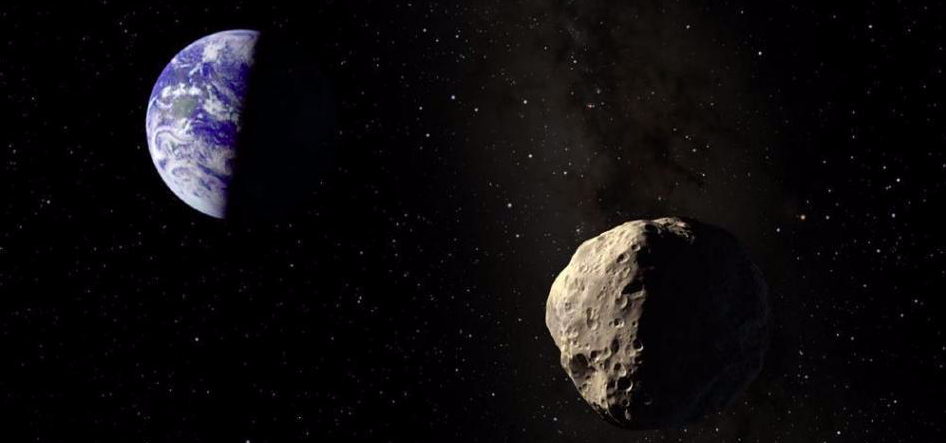The asteroid known as 99942 Apophis was discovered by a team of astronomers in June 2004. Ever since then, it has been observed and it’s trajectory planned out. On April 13, 2029, a speck of light will streak across the sky getting brighter and faster. At one point, it will travel more than the width of the full Moon within a minute and it will get as bright as the stars in the Little Dipper (Ursa Minor). The 340-meter wide asteroid will come dangerously close to Earth.

Too Close For Comfort?
The asteroid, 99942 Apophis is predicted to cruise by Earth at only 31,000 km above the surface, a distance at which some spacecraft orbit the planet. Even so, the international asteroid research community couldn’t be more excited about this event. Many scientists are gathering this week at the 2019 Planetary Defense Conference in College Park, Maryland. They are going to discuss observation plans and scientific opportunities for the celestial event which is still a decade away
Marina Brozovicm a radar scientist at Nasa’s Jet Propulsion Laboratory in Pasadena, California, who works on radar observations of near-Earth objects (NEOs), has said that the Apophis’ close approach in 2029 will be an incredible opportunity for science. The asteroid will be observed with both optical and radar telescopes. With radar observations, it’s possible that the scientists might be able to see surface details that are only a few meters in size, which is quite remarkable.
Ten Years To Go
This event in 2029 is definitely something special. In fact, it’s actually quite rare for an asteroid of this size to come so close to the Earth. Although scientists have spotted smaller asteroids in the region of 5-10 meters flying by Earth at a similar distance, asteroids the size of Apophis are far fewer in number and therefore do not pass this close to Earth as often.
The asteroid will probably look similar to a moving star and will first become visible to the naked eye in the night sky over the southern hemisphere, flying above Earth from the east coast to the west coast of Australia. It will be mid-morning on the East Coast of the United States when Apophis is above Australia. It will then cross the Indian Ocean, and by the afternoon in the eastern US, it will have crossed the equator, still moving west, above Africa. Scientists predict that Apophis will be over the Atlantic Ocean at it’s closest and will be there for about an hour before getting further away. That is if their predictions are correct of course.
Collision?
The initial observations of the asteroid and it’s trajectory course caused quite a stir. At first, orbital calculations revealed that the asteroid had a 2.7 percent chance of impacting Earth in 2029. However, additional observations refined the orbit and completely ruled out that possibility. Current calculations show that Apophis still has a small chance of impacting Earth, less than 1 in 100,000 many decades from now. It is still a possibility though.
Davide Farnocchia, who is an astronomer at JPL’s Center for Near Earth Objects Studies (CNEOS), is co-chairing the April 30 session on Apophis with Brozovicm. He has said that scientists are already aware that the close encounter with Earth will change Apophis’ orbit, but the models also show that the close encounter could change the way this asteroid spins, and it is possible that there will be some changes on Earth, such as avalanches.
There are currently about 2,000 known Potentially Hazardous Asteroids (PHAs). It is predicted that by monitoring and studying Apophis, scientists can gain a better understanding and perhaps even some new information that may one day to lead to advanced planetary defense from large asteroids.
